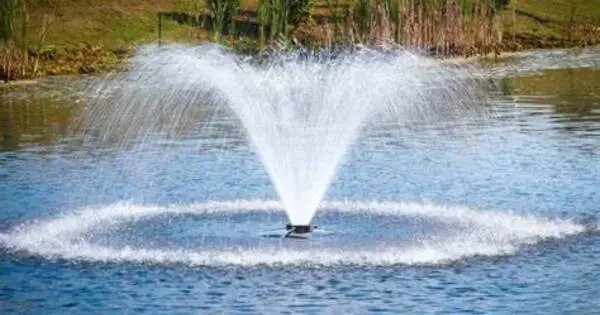Water aeration is the process of introducing air to water. It is the process of increasing or maintaining the oxygen saturation of water in both natural and artificial situations. This is often done to enhance the level of dissolved oxygen in the water, which is critical for aquatic organism survival and the overall health of water ecosystems. Aeration techniques are extensively employed in pond, lake, and reservoir management to treat low oxygen levels or algae blooms. Aeration can be used in a variety of water bodies, including ponds, lakes, reservoirs, and aquariums.
There are several methods of water aeration:
- Surface Aeration: This entails producing turbulence at the water’s surface in order to enable gas exchange between the water and the atmosphere. Surface aerators and fountains are common mechanical devices used for this purpose.
- Subsurface Aeration: In this procedure, air is supplied beneath the water’s surface to encourage water circulation and oxygen transmission. Subsurface aeration systems that use diffused aeration devices such as diffusers or air stones are widespread.
- Dissolved Oxygen Augmentation: This entails immediately injecting oxygen into the water. To rapidly raise dissolved oxygen levels, pure oxygen or oxygen-enriched air can be pumped into the water. This technique is commonly employed in aquaculture systems.
- Biological Aeration: Some aquatic plants and microorganisms naturally contribute to water aeration through photosynthesis and other metabolic processes. Promoting a healthy and diverse aquatic ecosystem can enhance the biological contribution to aeration.
The benefits of water aeration include:
- Improved Oxygen Levels: Aeration increases the amount of dissolved oxygen in the water, which is essential for the survival of fish and other aquatic organisms.
- Reduced Algae Growth: Adequate oxygen levels can help control the growth of algae, preventing issues such as algal blooms.
- Improved Water Quality: Aeration can help in the breakdown of organic matter, reducing the accumulation of sediments and improving overall water quality.
- Prevention of Stratification: In stagnant water bodies, temperature layers can form, leading to stratification. Aeration helps prevent this by promoting mixing and circulation.
- Odor Control: Aeration can help eliminate foul odors associated with anaerobic conditions in water.
Water aeration is widely employed in a variety of applications, ranging from decorative pond maintenance to large-scale water body management for ecological balance and sustainable fisheries. The specific method employed is determined by criteria such as the size and depth of the water body, the intended output, and the aeration system budget.
















